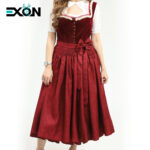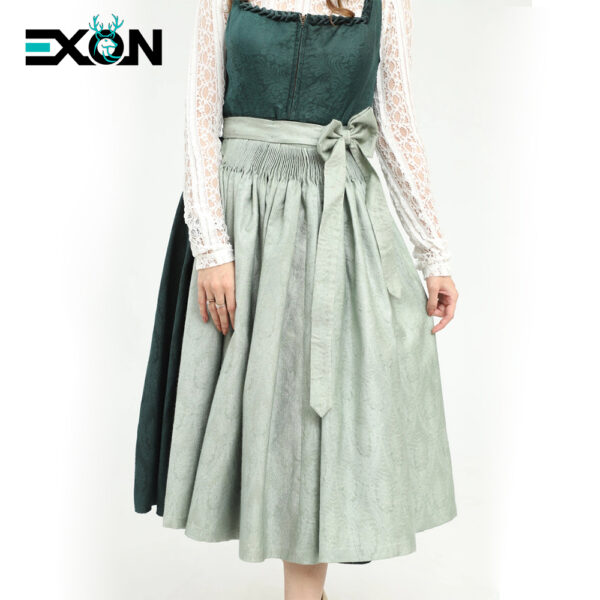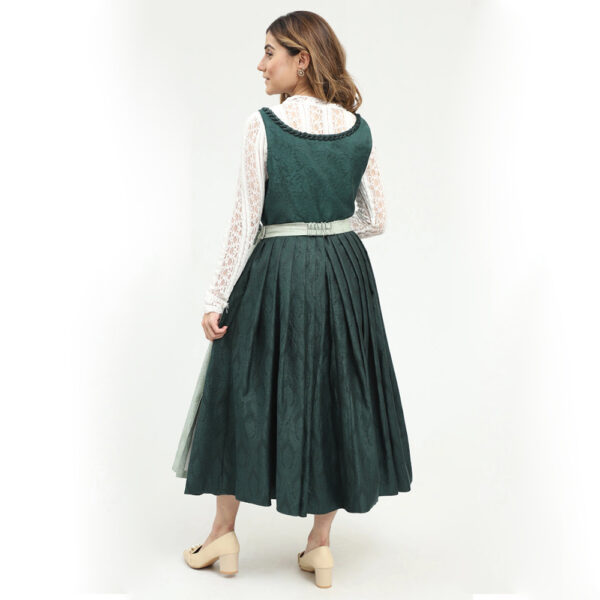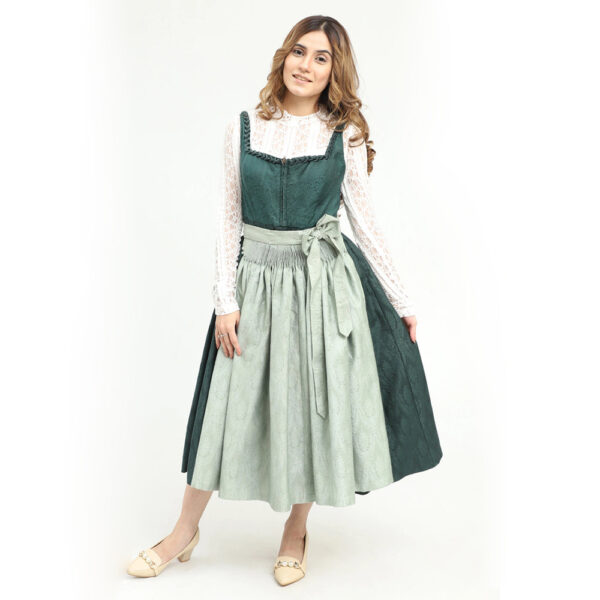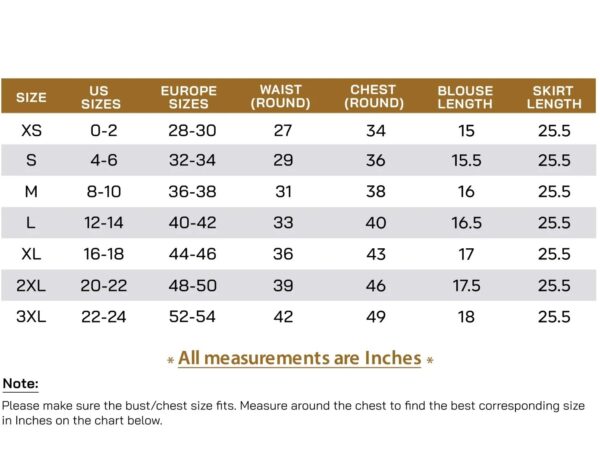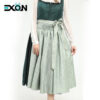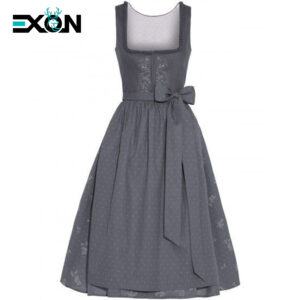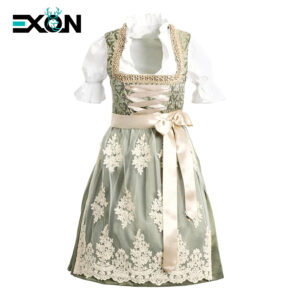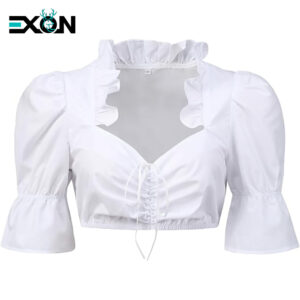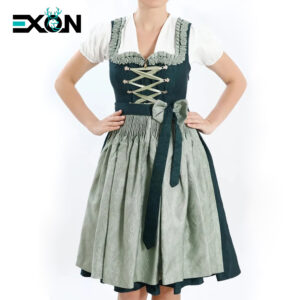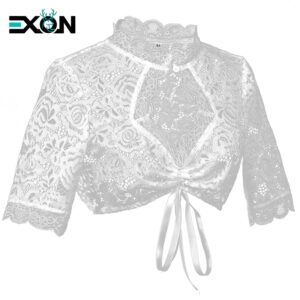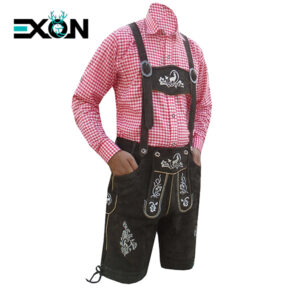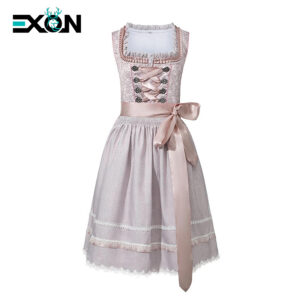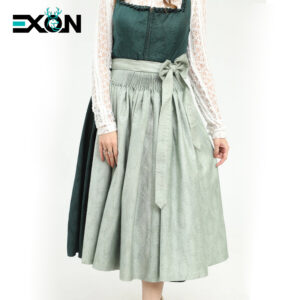Description
Anatomy of a Dirndl: More Than Just a Dress
A traditional dirndl consists of several meticulously crafted components:
-
Bodice (Moeder or Libel):
Fitted and often structured with boning, the Fashion bodice accentuates the wearer’s silhouette. It typically laces up, buttons, or hooks at the front or back and is detailed with embroidery, ribbons, or decorative trim. -
Blouse (Dirndlbluse):
Worn underneath the bodice, the Fashion blouse is usually white and made from cotton, linen, or lace. It may feature puff sleeves, a Peter Pan collar, or a delicate off-the-shoulder neckline (Schalkragen). -
Skirt (Rock):
Attached to the bodice, the skirt is full, pleated, and falls anywhere from knee-to-ankle length. Its cut allows ease of movement—perfect for dancing. -
Apron (Schurz):
Tied around the waist, the apron is both Fashion decorative and symbolic. Its placement often hints at the wearer’s relationship status:-
Left side: Single
-
Right side: In a relationship or married
-
Middle front: Virgin (traditional) or a server/child
-
Back: Widow
-
🌸 Regional Variations & Modern Styles
Dirndls vary by region, each with distinct colors, embroidery patterns (Stickered), and fabrics. For example:
-
Upper Bavaria: Often Fashion features blue, green, or traditional Weißblaue (white and blue) designs.
-
Black Forest: Deeper colors like burgundy, black, or dark green with elaborate floral embroidery.
-
Franconia: Bright reds and rich patterns are common.
Modern interpretations have expanded the dirndl’s appeal. Designers now use contemporary fabrics like jersey, lace, and even leather, and offer styles in bold colors, shorter lengths, and minimalist designs—making the dirndl accessible and fashionable for younger generations and international audiences.
✨ Cultural Significance & Wearing the Dirndl Today
Wearing a dirndl is an expression of Heimat (homeland) and pride. It is common attire during many of Germany’s cultural and religious festivities, including:
-
Oktoberfest
-
Christmas Markets
-
Folk festivals and fairs
-
Traditional weddings and baptisms
The dirndl is also a testament to artisanal skill. Handmade dirndls from renowned regions like Munich, Meshach, or the Alpine villages are highly valued, often featuring hand-embroidered details, fine wool, silk, or velvet.
✅ Conclusion: A Living Tradition
The German dirndl is much more than historical dress—it is a dynamic and enduring symbol of German culture. It bridges generations, connecting the wearer to a rich heritage while allowing for personal expression through style, color, and detail. Whether worn at a world-famous beer festival or a quiet village celebration, the dirndl continues to tell a story of craftsmanship, identity, and joy.


